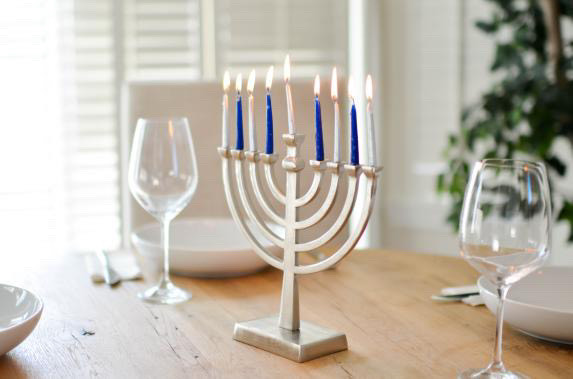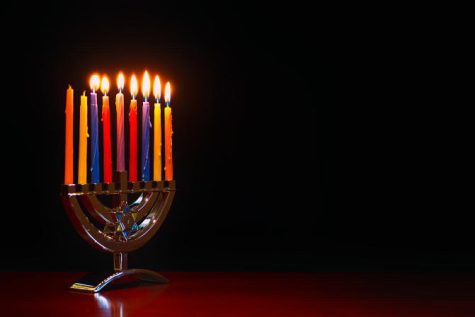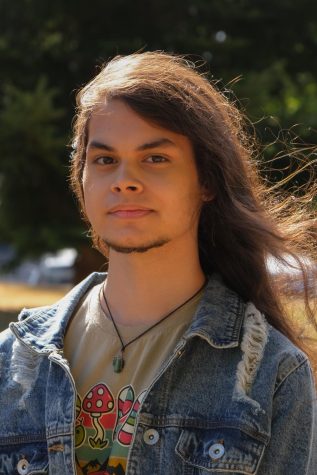The History of Chanukah

December 25, 2022
With the last of the orange leaves falling from now-barren trees, we begin to enter the winter holiday season. One such holiday being Chanukah, the festival of lights.
Although most have heard of Chanukah, not a lot of people know the meaning behind the holiday and how it’s really celebrated. This has led to misconceptions and ignorance surrounding it. To truly understand its meaning, you have to understand how it came to be.
Chanukah, also spelled Hanukkah, is a Jewish holiday that begins during sundown on the 25th of Kislev in the Hebrew calendar and lasts for eight days. In the Gregorian calendar, which is typically used today, Chanukah usually falls sometime in November or December. This year Chanukah falls on the sundown of December 18th, until the evening of December 26th.

The history behind Chanukah dates all the way back to second century BCE, when Judaea led an outnumbered and out-armed group of Maccabee soldiers to victory against the reigning Syrian-Greek army in Jerusalem. They rededicated the city’s Second Temple back to their God after the temple’s Hellenist appropriation by the Syrian-Greeks, who had been using it to worship Zeus.
The story of Chanukah states that in order to complete the rededication of the temple, the Maccabees needed to relight the temple’s menorah (a multi-handled candelabrum). Because the temple’s original golden one was stolen, they created their own out of cheaper metals. It was said that the Maccabees only found enough oil to light the menorah for a single night, but miraculously, the oil burned for eight consecutive days until they found more to keep the flames lit indefinitely.
The modern-day commemoration of this miracle is found in the tradition of lighting the Chanukah menorah. The Chanukah menorah is different from the traditional menorah found at the second temple, as it has nine branches to represent the eight days of the festival, as well as to hold the helper candle known as a “Shamash.” The traditional menorah only had seven branches, representing completion. Jewish families will light a new candle on the menorah for each subsequent day of the festival using the Samash. (there’s a lot more tradition and nuance, but this is just a basic summary). The menorahs are traditionally left near a doorway or window sill. The lighting of the menorah is one of the many holiday traditions.
Other traditions include the eating of fried foods, such as the hearty latkes (a sort of fried potato pancake) and delicious jelly donuts known as sufganiyot. There’s also the tradition of giving children “gelt”, aka, money. Sometimes gelt is given in the form of chocolate coins, but it’s not very traditional.
Now that we know the history behind Chanukah, alongside some of its traditions, we can also begin to analyze the misconceptions around the holiday.
One of the biggest misconceptions is that Chanukah is simply a “Jewish Christmas”, which simply isn’t true. Chanukah is to celebrate the miracle of the oil and the reclamation of the Second Temple in Jerusalem. Christmas is traditionally celebrated to honor the birth of Jesus Christ. So the question is: why is this so commonly thought?
One reason Chanukah is lumped in with Christmas is because both holidays are within a similar time frame. This closeness allows for the association of the two holidays in people’s minds.
Sophia Toobian, a Jewish student from the Ida B. Wells community, says that she believes that Chanukah is viewed this way because of its portrayal in the media and the ignorance surrounding it. “The whole point of the holiday isn’t to just get together and give each other gifts and light candles, but that’s how it’s represented a lot in society and media,” she explained. “[Jewish people] stood up to their oppressors and made so many sacrifices, but nobody really knows the story of it and how Chanukah really came to be.”

This association to Christmas is a cause of another major misconception: that Chanukah is the most important Jewish holiday there is. “It’s honestly not even in the top three or five major Jewish holidays. It’s really only as big as it is in the western world because it’s so close to Christmas. I feel like it would be cool if Yom Kippur became more widely known. Yom Kippur is about giving and tossing away; we spend the holiday repenting our sins from the past year so we can start over anew,” clarified Hana Harris, another member of the Jewish community at Wells.
It’s imperative that we learn about the people around us. Once we take the time to understand others, we can work on building environments that are inclusive and equal to all. Although learning about Chanukah may not seem like a major deal to most, by taking the time to learn about it, you can make your Jewish peers feel seen and represented. Understanding is one of the first steps we can take toward equality.


